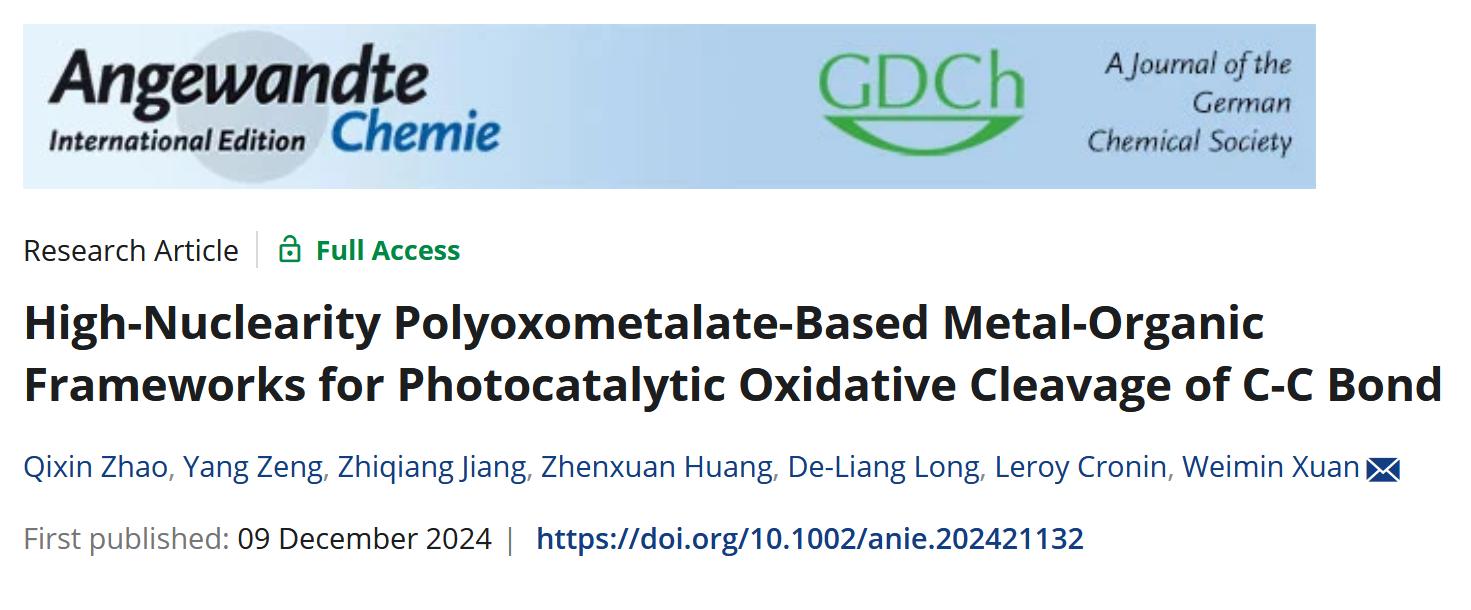Recently, the research team led by Distinguished Researcher Xuan Weimin from the College of Chemistry and Chemical Engineering has made new progress in the field of polyacid-based metal-organic frameworks.

The research team successfully developed an innovative strategy to synthesize unprecedented high-nuclear metal-organic frameworks (MOFs) HNPOMOF-1 and HNPOMOF-2 based on {P8W58} and {P8W64} by modulating the reaction activities of the core oxygen and terminal oxygen in high-nuclear polyoxometalate (POM) clusters {P8W48}. Notably, {P8W58} and {P8W64} are the POM units with the highest nuclearity used to construct MOF materials. HNPOMOF-1 exhibits a three-dimensional framework structure and contains exposed carboxylic acid groups within its cage-like cavities, whereas HNPOMOF-2 presents a two-dimensional layered structure, allowing it to be easily exfoliated into ultrathin nanosheets (HNPOMOF-2NS). Further studies indicate that the exfoliated HNPOMOF-2NS demonstrates superior catalytic activity in the photocatalytic oxidative cleavage of C-C bonds in lignin model compounds. This research not only confirms the potential of high-nuclear POM clusters as multifunctional building blocks (BBs), but also makes significant strides in the construction and functional application of high-nuclear cluster-based framework materials, providing new insights for the development of novel high-nuclear cluster materials.
This work was recently published under the title High-Nuclearity Polyoxometalate-Based Metal-Organic Frameworks for Photocatalytic Oxidative Cleavage of C-C Bond in the internationally renowned journal Angewandte Chemie International Edition.
Zhao Qixin, a doctoral student from the 2020 cohort at the College of Chemistry and Chemical Engineering, is the first author of the paper, while Zeng Yang, a master's student from the 2022 cohort, is a co-author. Distinguished researcher Xuan Weimin is the corresponding author, with Professor Leroy Cronin from the University of Glasgow serving as a co-corresponding author. Donghua University is the first corresponding institution. This research was supported by the National Natural Science Foundation and the Interdisciplinary Key Program of Basic Scientific Research Fund for Central Universities.
